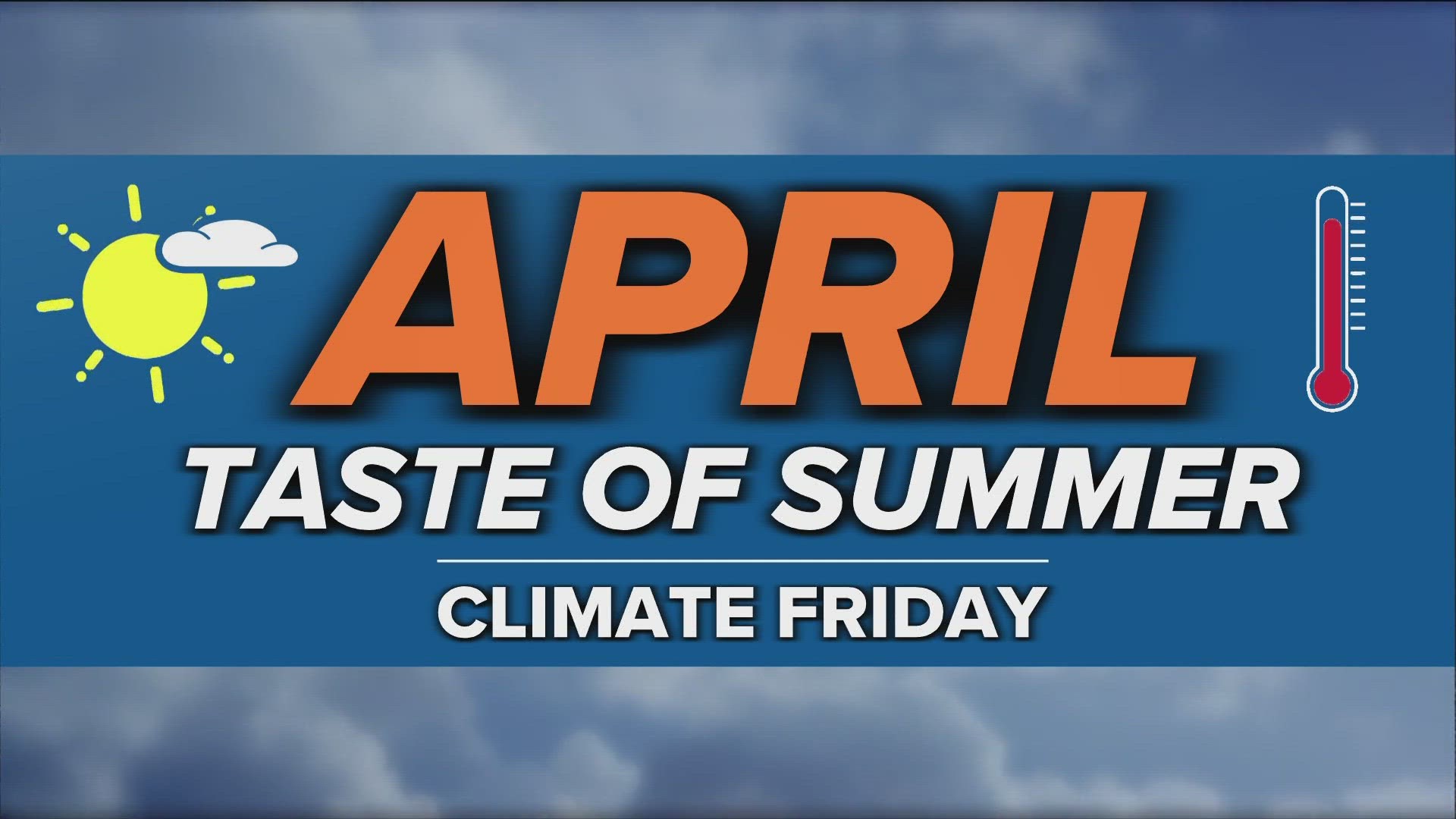TOLEDO, Ohio — Even though the calendar says April, Mother Nature has given us a taste of summer weather this week. With temperatures in the 80s, abundant sunshine and brighter evenings, this week has looked and felt more like June than April.
Is climate change causing spring warmth? What can you expect for the rest of April? Meteorologist John Burchfield answers those questions and more in this week's Climate Friday Newsletter.
This week delivered our first 80 degree temperature since September 21st. After almost 200 days without an 80 degree reading, Wednesday delivered summery warmth. With a high temperature of 83, Wednesday came close to the record of 85 set on April 12, 1977.
Thursday followed suit, featuring even warmer conditions with continued sunshine. High temperatures surged to 85 at the Toledo Express Airport, approaching the record of 87 from April 13, 1941.
Friday will likely tie another 1941 daily record of 83, continuing the stretch of unseasonable warmth. The summer preview will stick around for the first half of the weekend before a cold front brings us back to reality on Sunday.
With a grand total of four days in the 80s plus a pair of days in the 70s, this week looked and felt more like the middle of summer. Temperatures surpassed our average high of 61 degrees by a huge margin, with some days nearly 25 degrees above average.

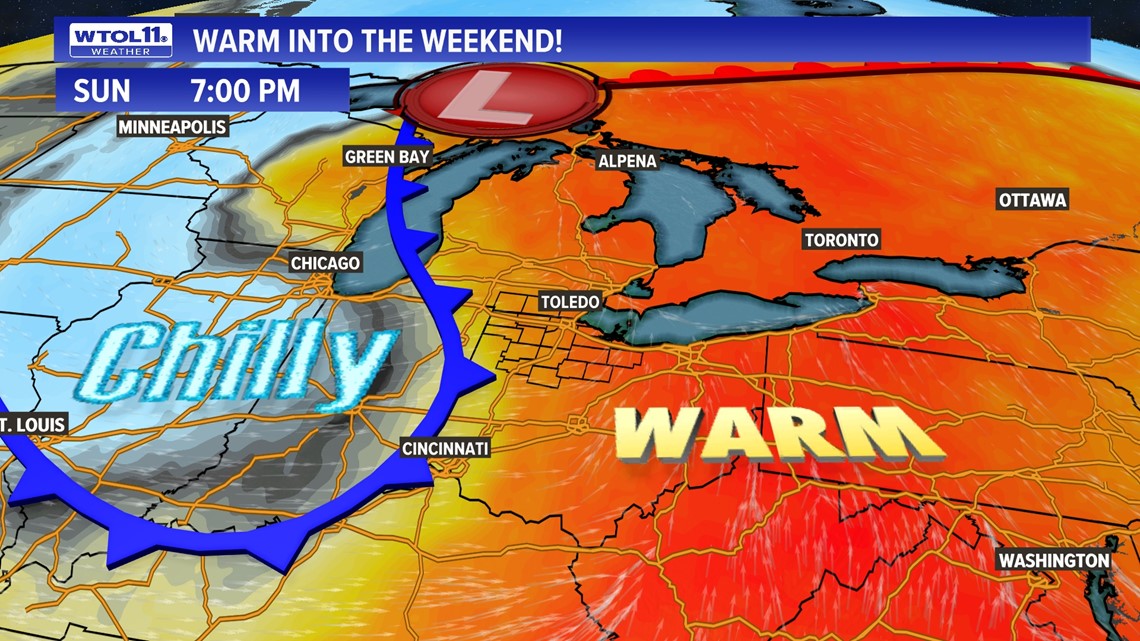
Warm stretches of spring weather will grow more common in the future, due in part to climate change. While fluctuations in the jet stream cause week-to-week changes in the weather, climate change impacts long-range shifts in weather averages.
Even though this week's warmth resulted from a ridge in the jet stream associated with high-pressure at the Earth's surface, climate change can be attributed for the increase in the frequency and intensity of early season warmth.
Record highs are growing more common in Toledo, the United States and across the globe. This graph shows the distribution of record highs versus record lows over the past 150 years.

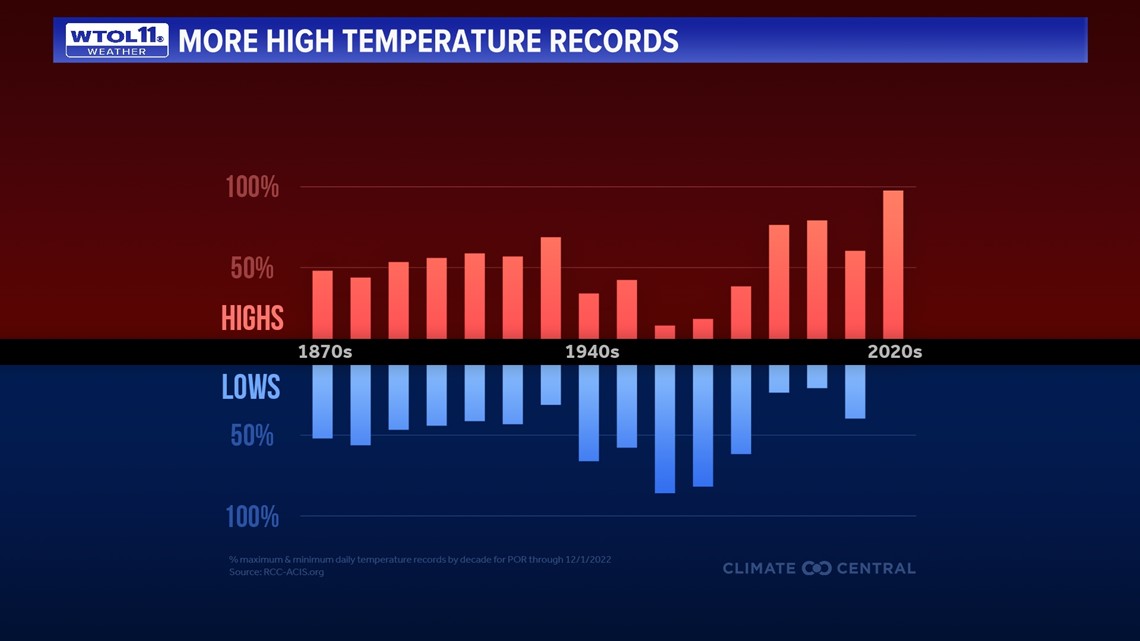
In the late 1800s when weather observation started off, high and low temperature records were fairly evenly distributed. By the mid-20th century, cold records were more common than warm ones, reflected by the blue lines on the bottom of the graph. In the 21st century, high temperature records have grown more common and significant, indicated by the taller red bars.
Climate change has increased the frequency and intensity of early season heat, and summery stretches of weather like this one will grow more normal in the future.
Even if you enjoy the spring warmth, this weather comes at a price. Temperatures in the 80s have accelerated the spring bloom and aggravated seasonal allergies.
Tree pollen levels have drastically ramped up this week after an early start to the allergy season. Mild winter temperatures contributed to an early start to allergy season, and this recent stretch of near-record high temperatures has exacerbated allergies.

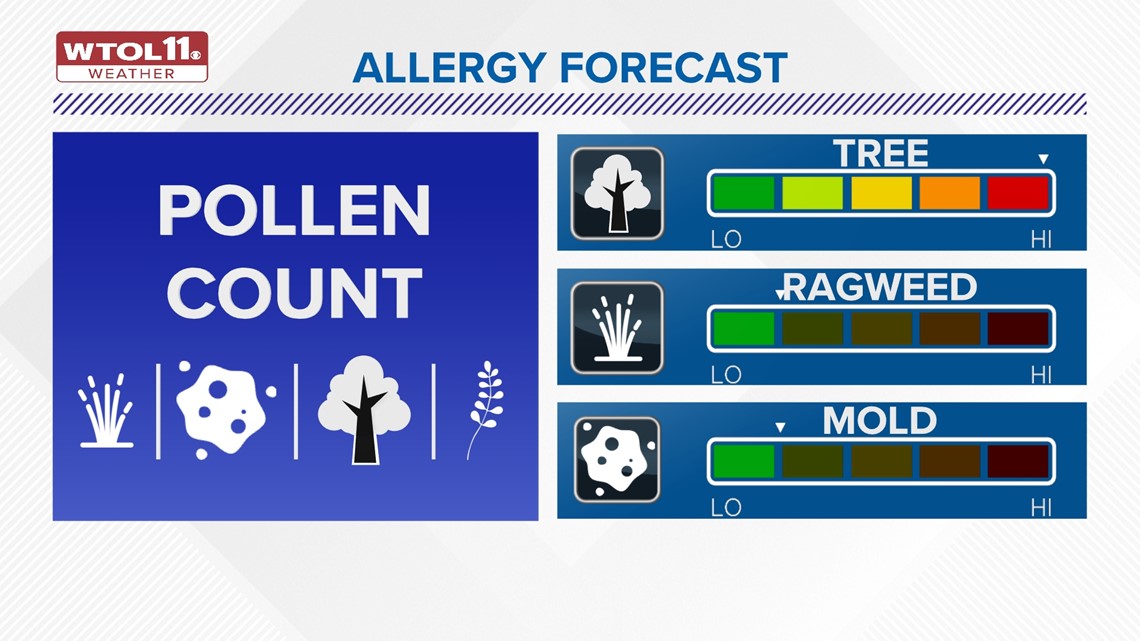
Tree pollen has soared to exceptionally high levels this week and is likely the culprit for your runny nose and watery eyes. Additionally, breezy conditions have spread pollen, and southwest gusts over 30 mph are to blame for aggravating allergies even more.
Tree pollen levels are expected to remain high through the weekend, dropping Tuesday as cooler temperatures return. Ragweed, mold and grass allergen levels are still very low, and tree pollen is the primary cause of early season allergies.
Even though the past week has felt more like summer, the spring season is often a wild card that can bring vast swings in temperatures. For many folks, April is a time of gardening, planting and growth.
Conventional rule of thumb suggests waiting to plant until after Mother's Day due to the uncertainty of spring weather and potential for frost and freeze. How common are spring frost and freeze and what can you expect this year?
Frost, which occurs at a temperature of 36 degrees, is extremely common in April and May. Typically, our final frost of the season occurs on May 8th, just a few days before Mother's Day. Planting flowers and vegetables after Mother's Day is the safest way to avoid spring frost, and climatology tells us that May frost is typical.
What about a freeze? Defined as a temperature at or below 32 degrees, freezing temperatures are often detrimental to spring gardens. In a normal year in northwest Ohio and southeast Michigan, the final freeze of the year occurs on average on April 26.
Generally, May is safely freeze-free, but occasionally, sub-freezing temperatures can strike in May or even June. Notably, 1972 dosed out a damaging late-season freeze on June 11. Sub-freezing temperatures this late in the season can destroy spring flowers and crops.

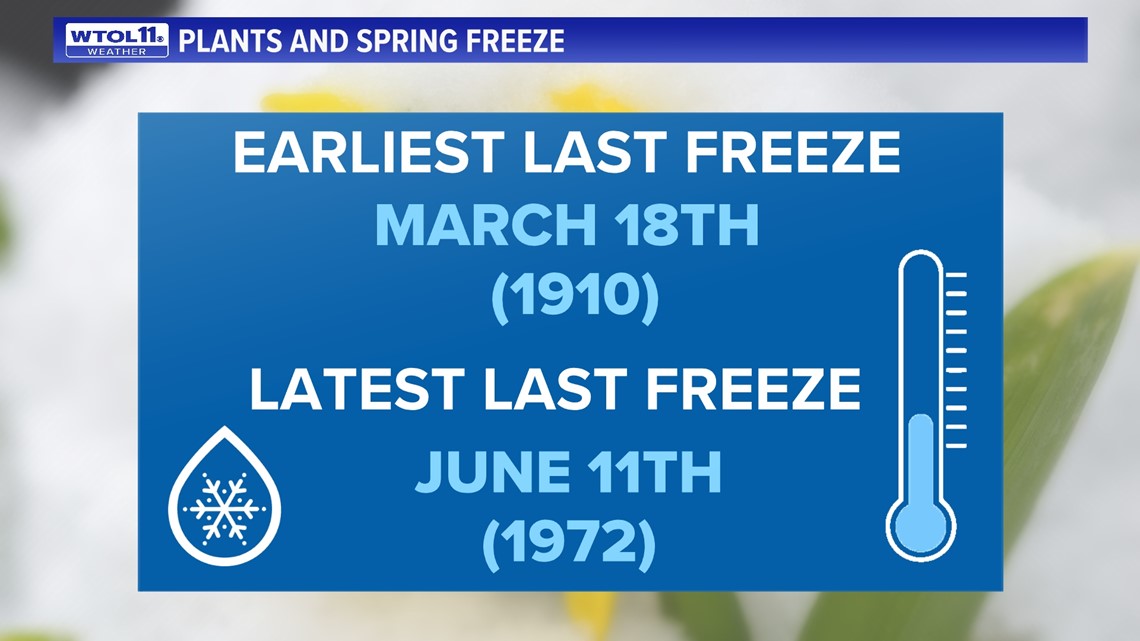
Thankfully, May and June freezes are relatively uncommon, and statistically speaking, we usually say goodbye to freezing temperatures by the end of April. We're still a month out from Mother's Day, so frosty conditions and freezing temperatures are still on the table.
The WTOL 11 Weather Team is forecasting an April cooldown that may drop our overnight lows to the mid-30s. Freezing temperatures are not anticipated in the 10-day forecast.

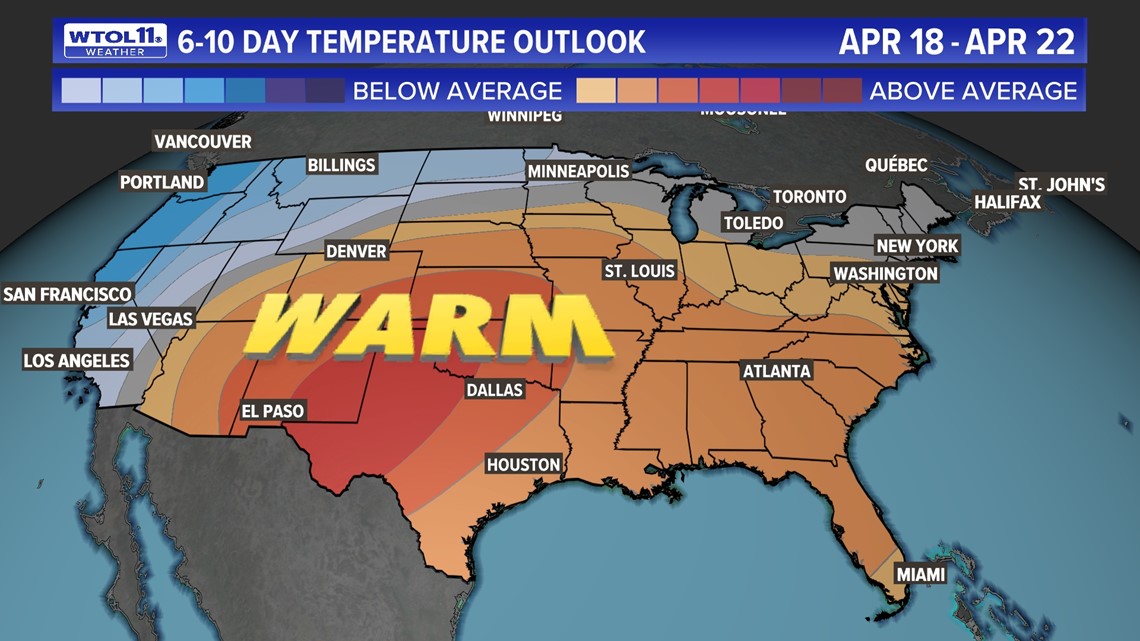
After a summer-like stretch of weather, it's back to reality with more typical spring conditions next week. Though climate change is making spring warmth more common, shifts in the jet stream that are responsible for our week-to-week variation in the weather.
Whatever Mother Nature gives us this spring, you can trust the WTOL 11 Weather Team for the latest 10-day forecast. Stay tuned for next week's Climate Friday Newsletter with Meteorologist John Burchfield.
MORE FROM WTOL 11 CLIMATE FRIDAY

